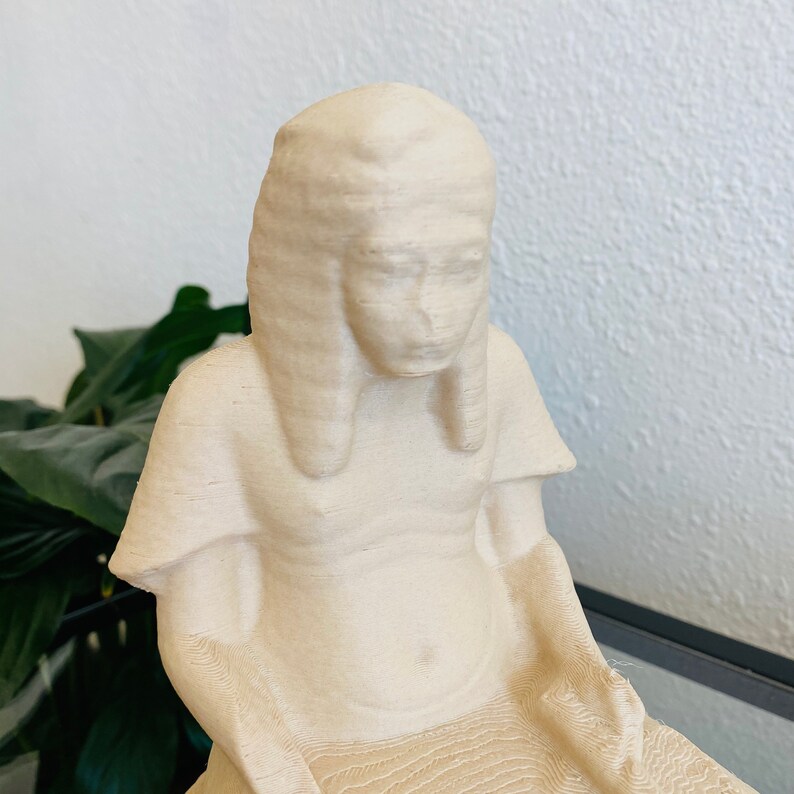

They learned reading, writing, and also arithmetic, algebra, religion, and law. We know there were at least some female scribes because a word has been found for them, but generally, of course, most were men. The “middle-age spread” of his abdomen might be a mark of his high status and certainly of his sedentary occupation.Įgyptian scribes trained from childhood. His chest is broad and the nipples are marked by two wooden dowels. The hands, fingers, and fingernails are sculpted remarkably realistically. His cap of hair is cut close to the skull. An off-center hole was drilled in the back of each to give the appearance of the pupil – ingenious! A line of black paint defines the eyebrows. The entire eye was then held in the socket by two large copper clips welded on the back. The back side was covered with a layer of organic material, creating the color of the iris and also probably serving as an adhesive. The front part of the crystal was carefully polished. (My mom used to say that about me!) Inlaid, they consist of a piece of red-veined white magnesite, in which a piece of rock crystal has been placed. Pay close attention to his eyes, his most striking feature.

It is obvious that his right hand originally held a reed pen which has long since disappeared. He wears only a simple white kilt which supports his partially-rolled scroll of papyrus. He is not highly-stylized like the pharoanic sculptures with their wigs, lavish clothing, and hieroglyphics. He sits cross-legged, in the most common posture for scribes. Lighting, surrounding colors, time of day, electronic display etc will change true life colors.The Seated ScribePainted limestone with rock crystal, magnesite, and copper/arsenic inlay for the eyes and wood for the nipples, found in Saqqara. The color shown by camera and on the digital display may look different in real life. We offer many custom color finishes like Silver Leaf, Bronze, Bronze with Patina, Aged stone, Pewter, CopperĪll finishes are Faux finish, each piece of art is hand made and no two (2) pieces are the same. It is also thanks to scribes that Egyptian literature is known.
STATUE OF SEATED SCRIBE HOW TO
The scribe is he who knows how to read and write, who uses divine words (the Egyptian term for hieroglyphs), he is the one who imposes taxes, who receives them, who draws up inventories of everything that exists, in short, he has the most important and best of professions. At that time they were princes of royal blood but officials gradually adopted this position. The first portrayals of seated scribes go back to the 4th Dynasty (around 2620-2500 BC). He wears a large wig, which leaves his ears uncovered, and a short belt-less skirt tied simply at the waist with a knot. In his left hand, he holds a papyrus unrolled over his knees, showing the list of funerary offerings. Lay, a high ranking official of the Pharaon (Chief of the Double Treasure), is seated cross-legged in the well-known position of a scribe. Mold made from an imprint of the original work. Egyptian Scribe Lay seated sitting statue Sculpture 7" museum reproduction


 0 kommentar(er)
0 kommentar(er)
